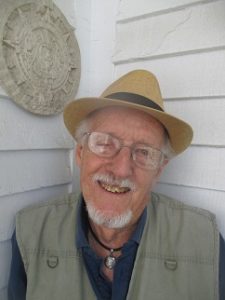Takeaway
When we, or someone close to us, have a disease that we see in our patients, it’s an opportunity to more deeply understand the illness experience.

Creative Arts in Medicine | March 21, 2023 | 1 min read
By Randy Barker, MD, Johns Hopkins Medicine, retired
I wrote “Co-Reader” about one week after learning that my friend Kim had had a stroke. I called him and it was tough to hear him struggle through his expressive aphasia to converse. And oh so nice when we talked for the third time and he said, at the end, perfectly, “Thank you Randy.”
In that call, I’d reminded him of the great joy we experience when we co-read a book that one or the other has suggested. I’d told him we would do it again. He concurred in garbled but well-intended words.
Because Kim is an especially close friend and because the spoken voice is how we embrace each other in friendship, I’ve now come as close as I ever have to appreciating a vexing situation that I saw in quite a few patients over the years. I now know better how another can voice affection through language that carries feelings even when the concrete meanings of the words are off target. Writing about co-reading is my way, now, to celebrate the way in which our friendship has thrived for a long time. I chose the following words to describe our relationship:
The rest is simple love
Filled with a galaxy
Of Poems and Story-Tellings,
And all the findings we have voiced
In our long-distance embraces,
Embraces grand in the grace and gratitude
We’ve noticed each in each
As we have co-read what we and others penned
As we have deepened what it is to be a friend.
I suspect that most people close to others with expressive aphasia recall in their own way, as I do, special ways in which language bound them each to each. And I suspect that most doctors get closer to what their patients are experiencing when someone close to them personally endures the suffering they have seen in their patients.
This piece expresses the views solely of the author. It does not necessarily represent the views of any organization, including Johns Hopkins Medicine.

